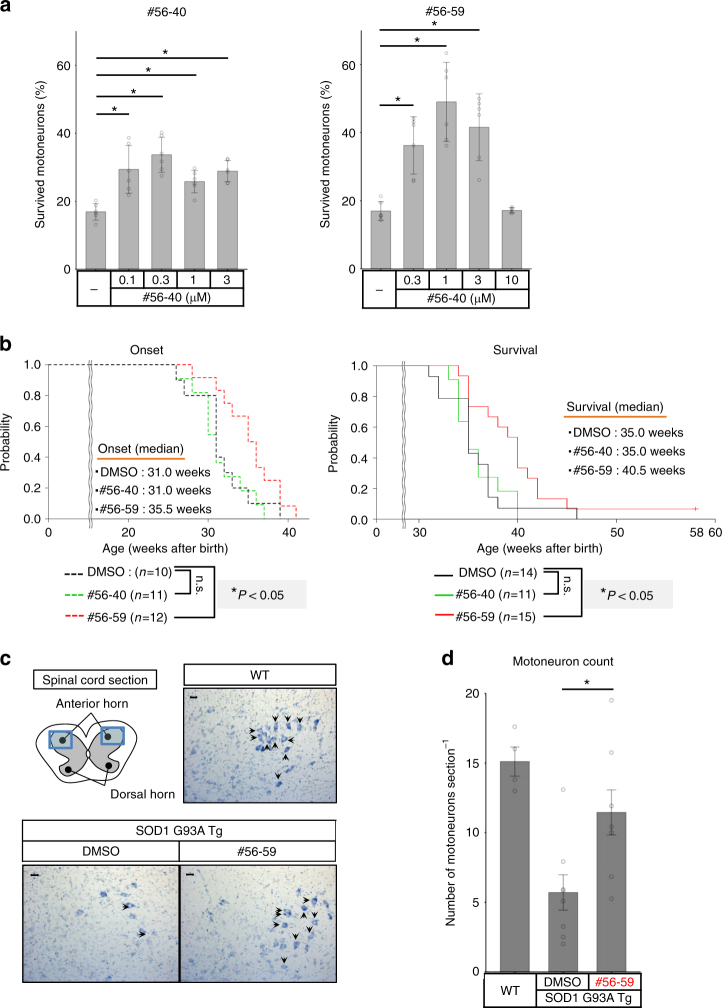Fig. 5.
Inhibiter of SOD1-Derlin-1 interaction, #56-59, ameliorates ALS pathology. a Effects of #56 analogs on motoneurons derived from ALS patient iPSCs with L144FVX mutation in SOD1 (ALS1). The ratios of surviving motoneurons (day 14/day 7 (%)) are shown as the mean ± s.d. (n = 6; *P < 0.05, also see Methods for statistical test). b Analysis of onset (DMSO: n = 10, #56-40: n = 11, #56-59: n = 12) and survival (DMSO: n = 14, #56-40: n = 11, and #56-59: n = 15) in SOD1G93A transgenic mice (SOD1 G93A Tg) continuously infused with #56 analogs by i.c.v. cannulation. Onset was determined by motor function deficit seen in rotarod performance. Black: DMSO treatment (control); green: #56-40 treatment; red: #56-59 treatment. Mice were followed in this survival study for 58 weeks, and the survival time of one mouse that did not show paralysis is shown as a tick on the line. Statistical analysis was performed using the Kaplan–Meier method followed by the log-rank test and the Gehan–Breslow–Wilcoxon test (*P < 0.05, n.s.: not significant). c Representative Nissl stain image of the lumbar spinal cord section (L2–L5) of indicated mice. All motoneuron counts were performed in a blinded fashion. Scale bar = 20 μm. d Quantification of motoneuron counts in c. Five sections per mouse were counted, and the data are shown as the mean ± s.e.m. WT mice: n = 4; DMSO-treated and #56-59-treated SOD1 G93A Tg: n = 8 in each group, *P < 0.05: significance was calculated using Student’s t test

